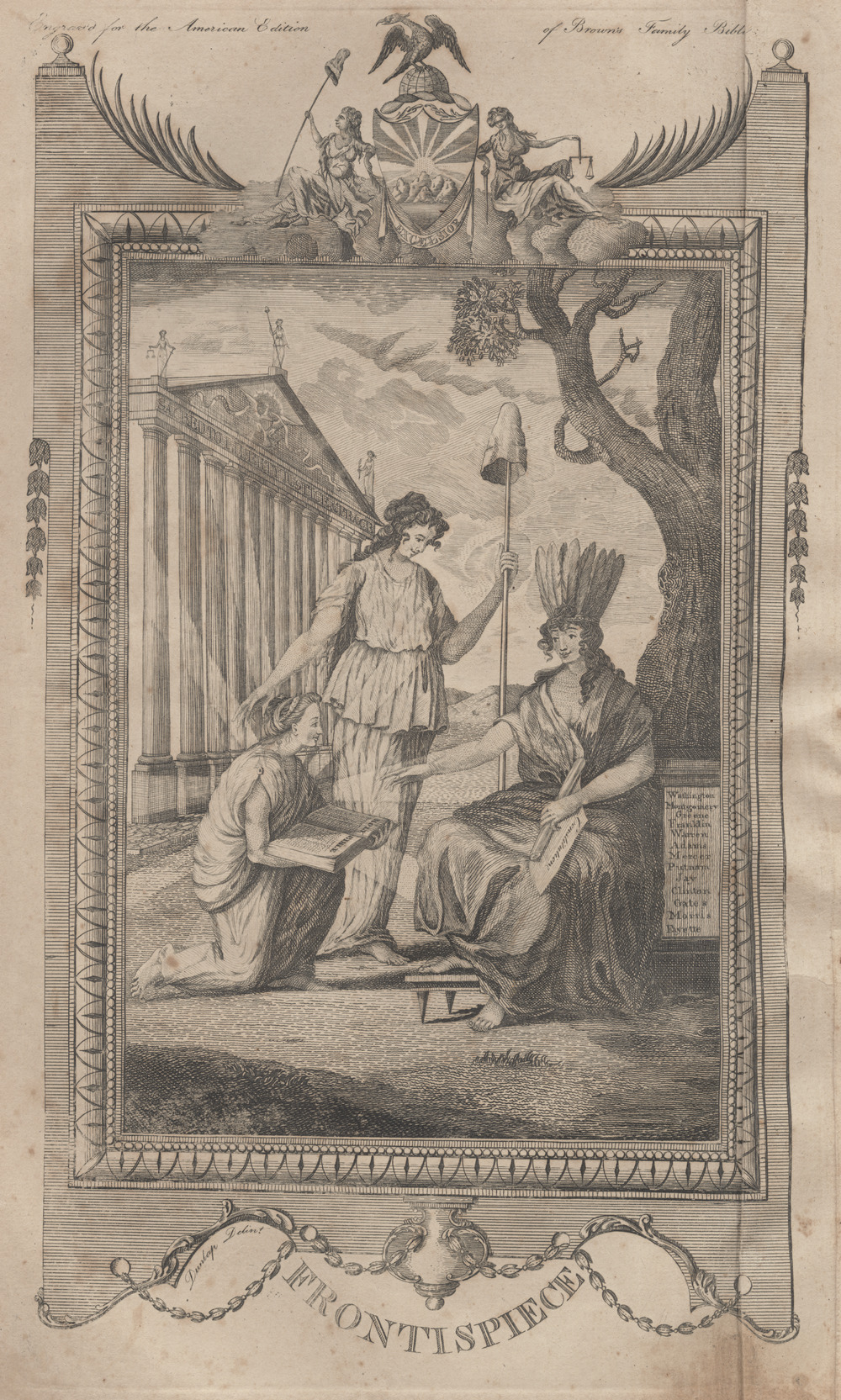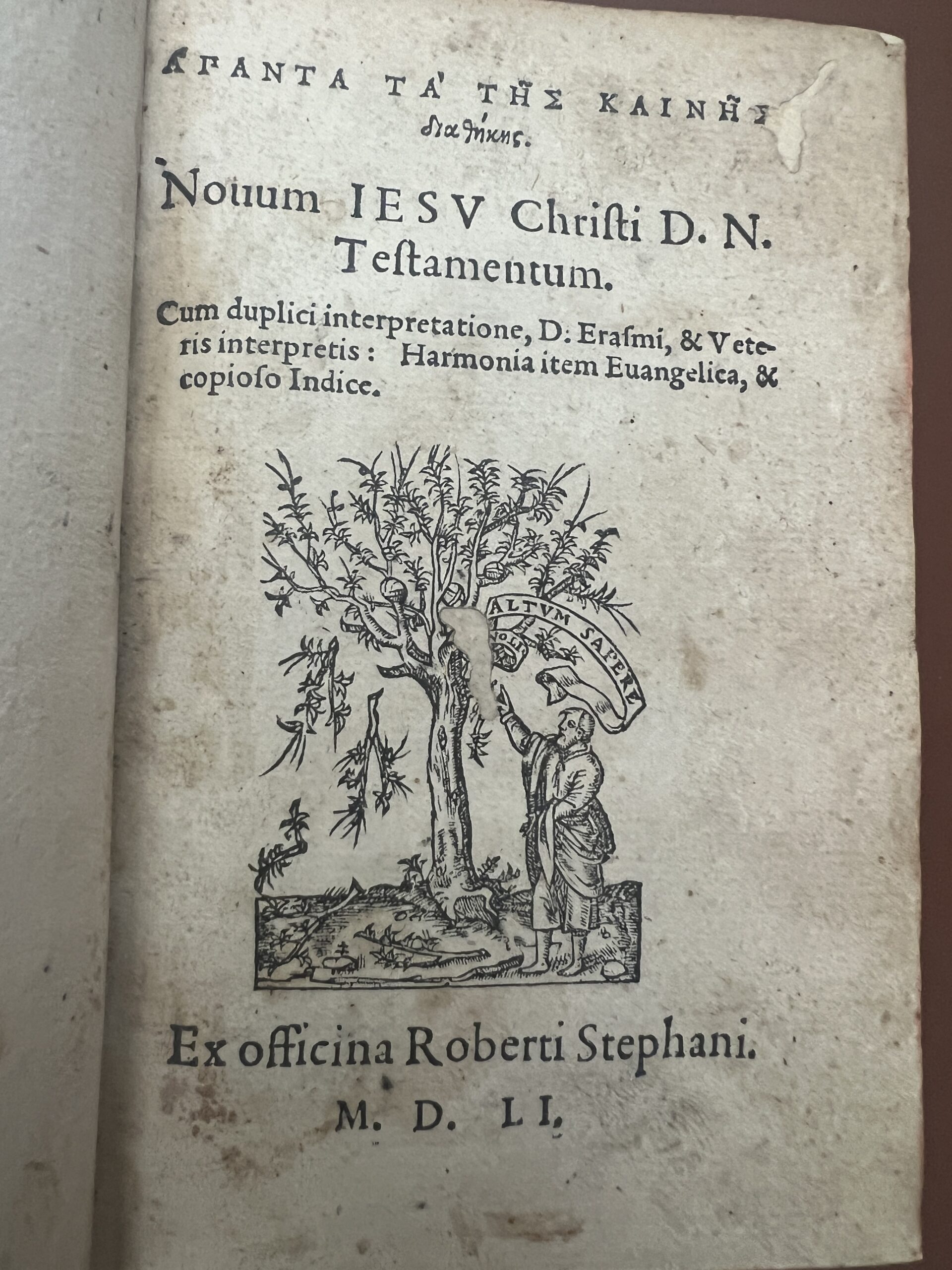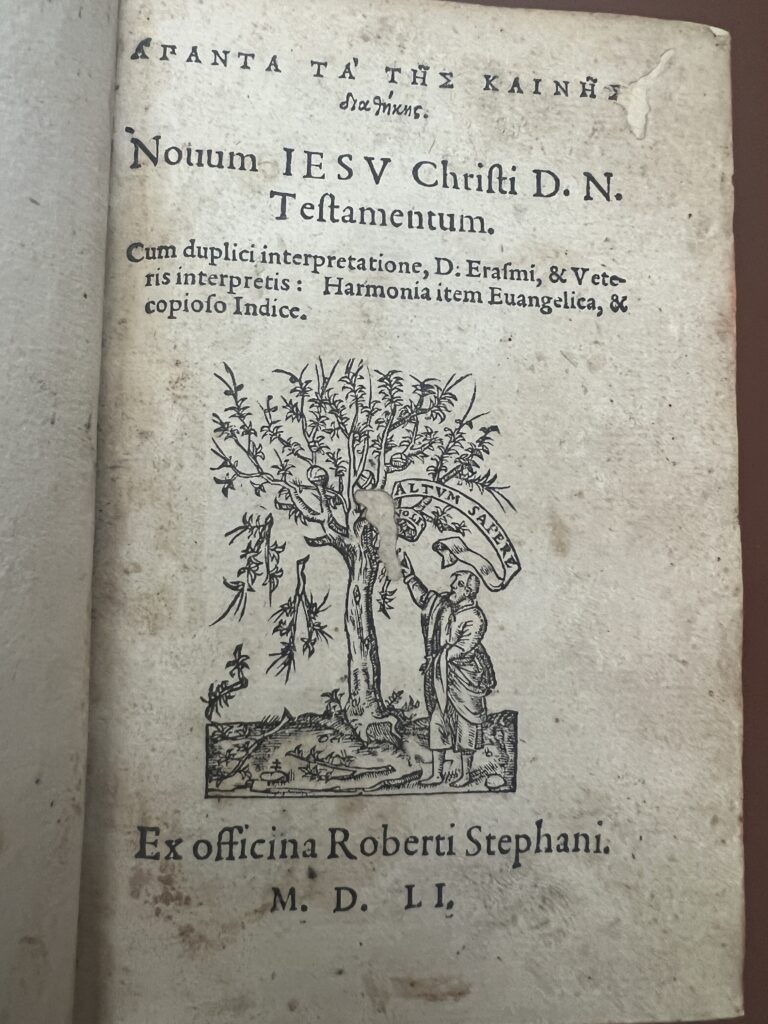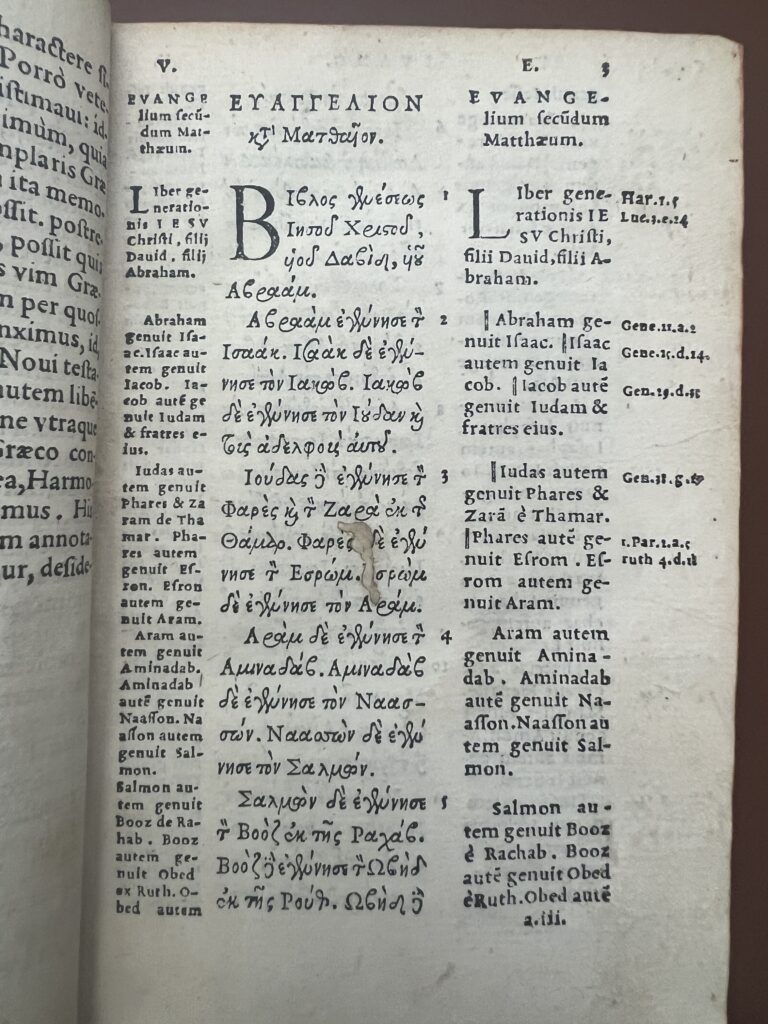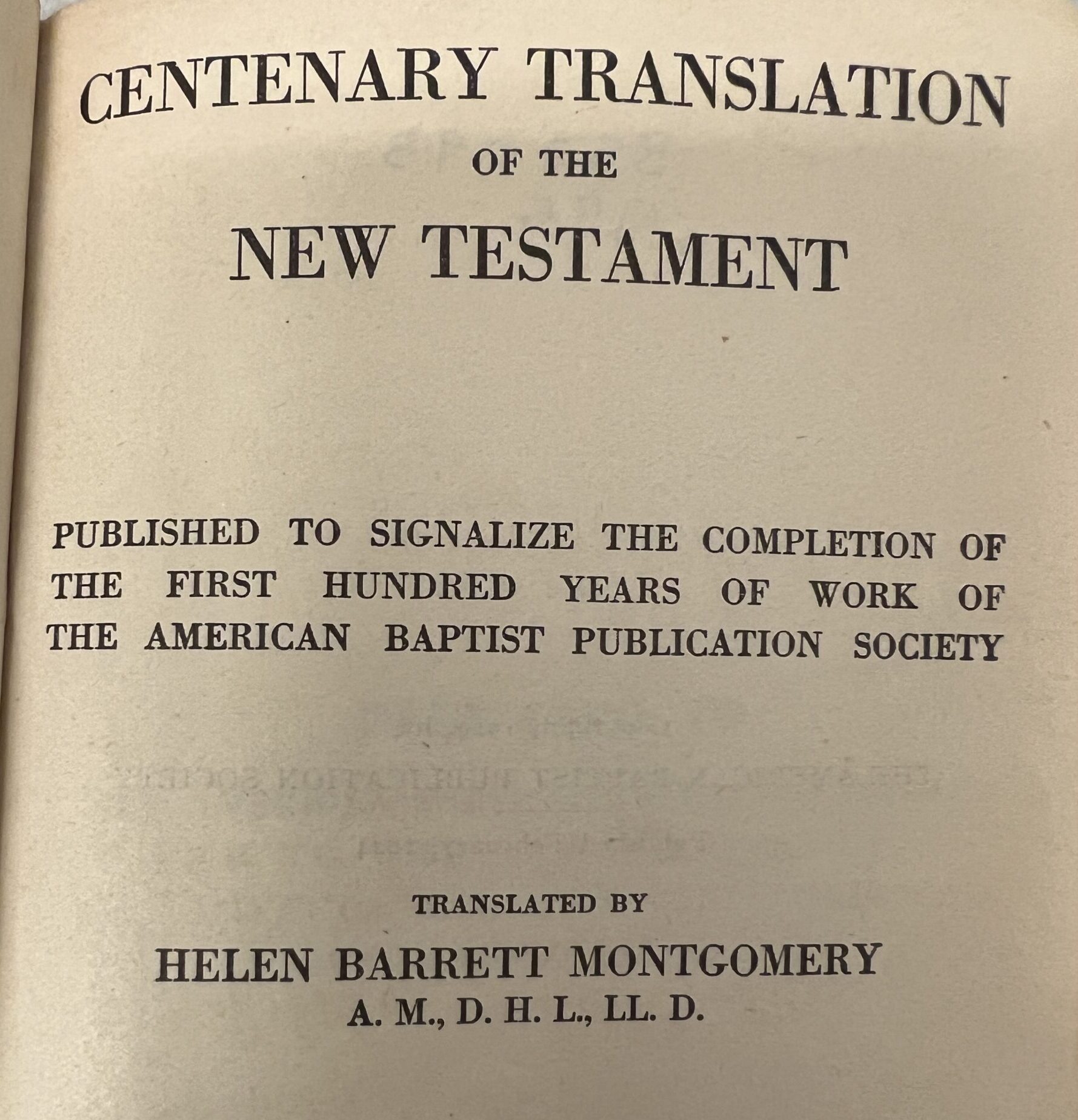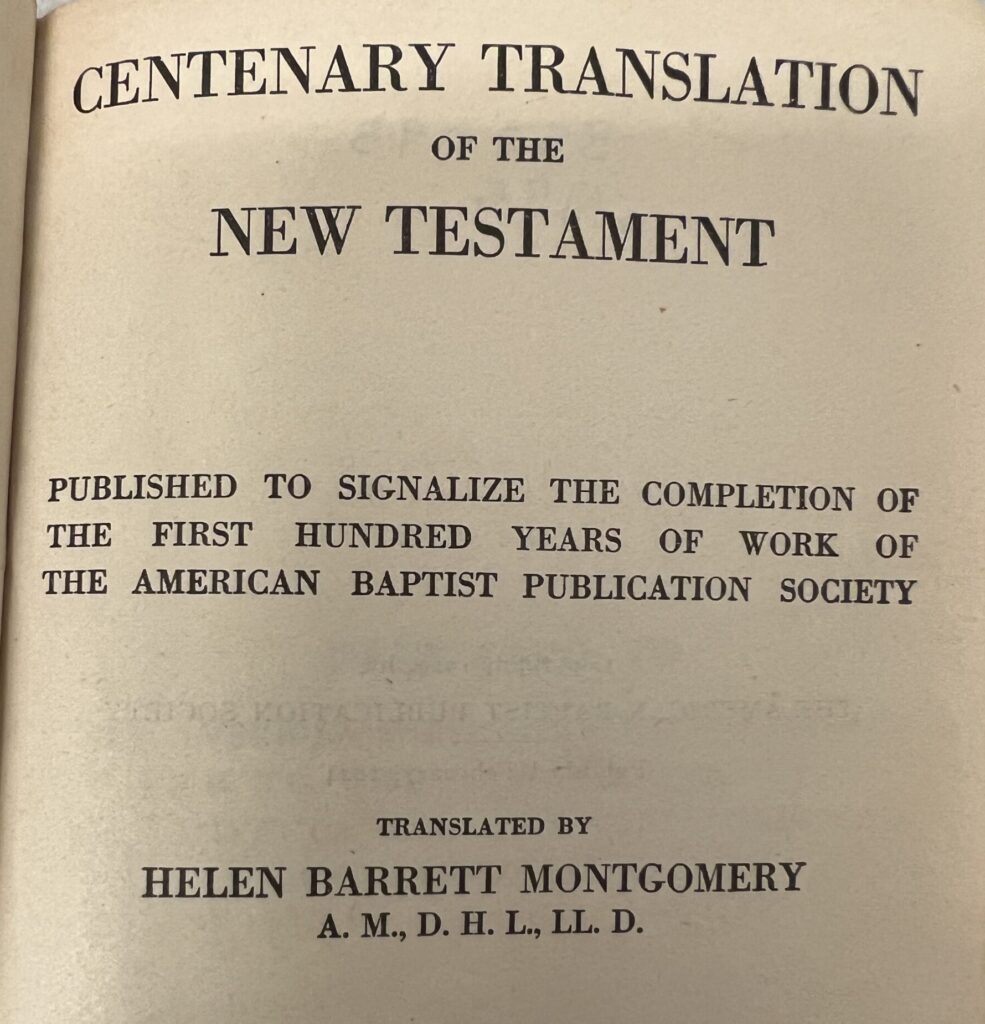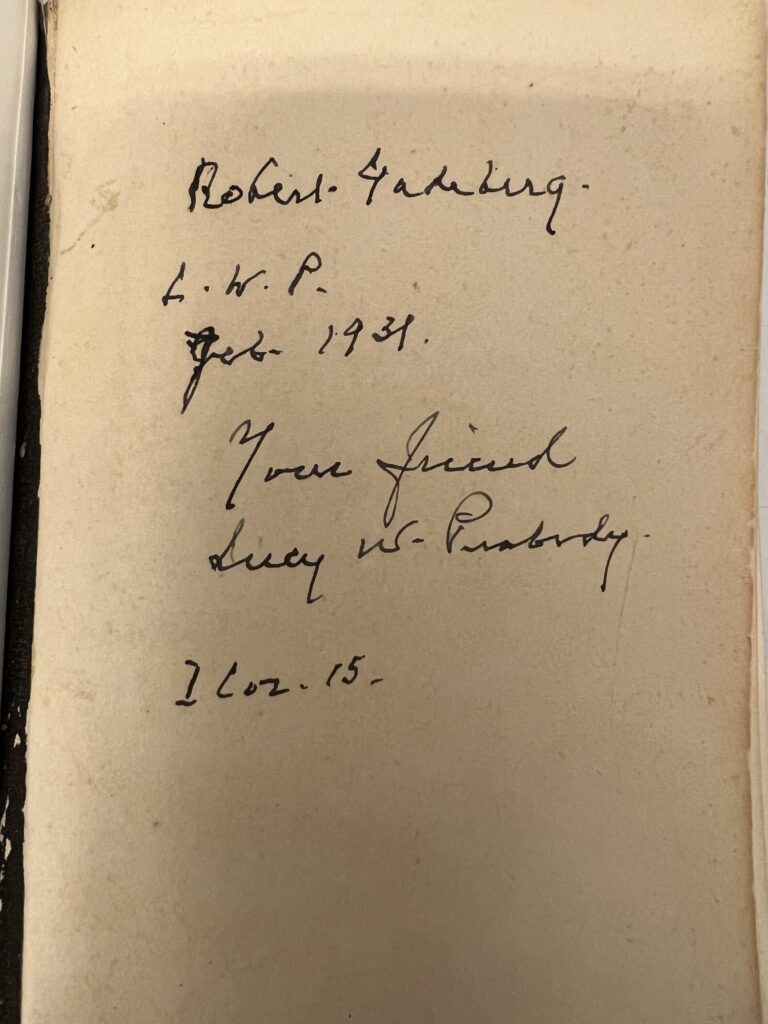With the recent establishment of the J. Michael Morgan English Bible & Psalmody Collection, Pitts Theology Library has become a premier library for the study of the Bible in translation. Among the library’s incredible Bible holdings are many of the first Bibles ever printed in the new American nation. One of the more interesting items in the collection is the Self-interpreting Bible by John Brown.
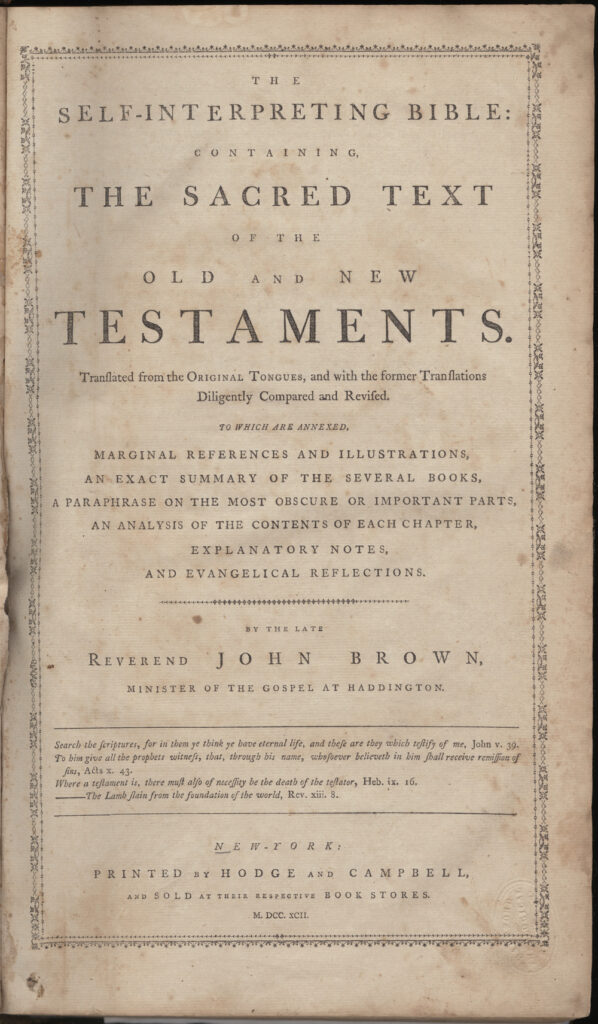
John Brown (1722-1787) was a Scottish Presbyterian minister, who published a metrical Psalter, a biblical concordance, and his “Self-Interpreting Bible.” The Bible was first published in Edinburgh in 1778, and though the text was the King James Version, it included Brown’s summaries of biblical books and marginal notes. Brown’s idea was to provide in a single volume all the information a reader would need to understand fully the meaning of the biblical text (hence the name “self-interpreting”). Brown’s Bible became wildly popular in the new American nation; it was first printed in New York in 1792 (the first complete Bible to be printed in the state), and it was subsequently issued in dozens of editions throughout the 19th and 20th centuries.
The first American edition, which is held at Pitts (1792 BIBL), was published by Hodge and Campbell and issued in 40 parts over 2 years, as part of a subscription model of publishing that was popular at the time. In a subscription publication model, the publisher would issue individual fascicles to paying subscribers, who at the end of two years could combine all issues into a single publication and have it bound. President George Washington is listed at the top of Hodge and Campbell’s subscriber list for this Bible.
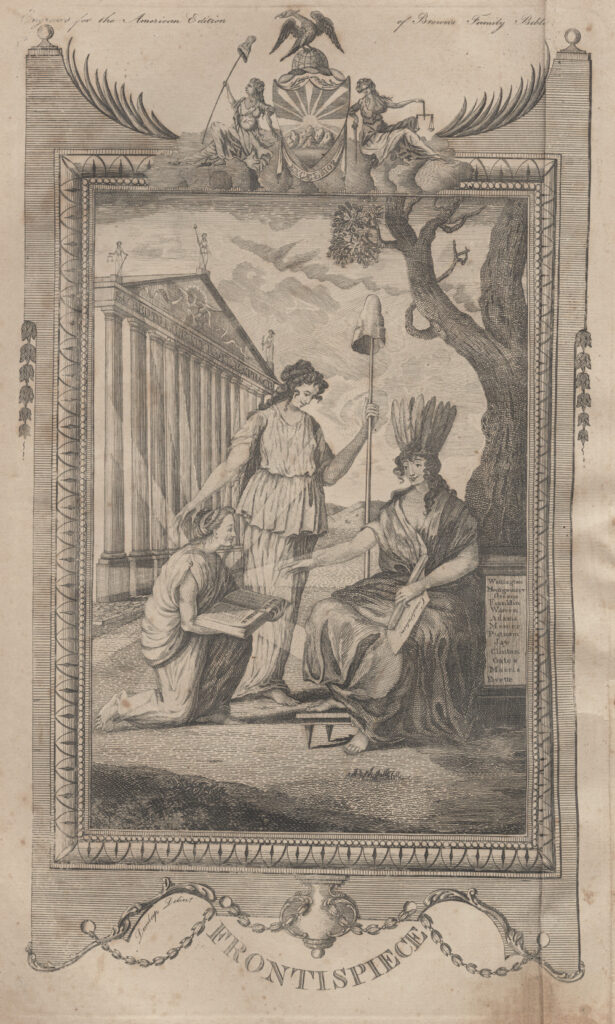
Most American printings of the Self-Interpreting Bible added elaborate images to illustrate biblical stories and supplement the text, and this first American edition includes a fascinating frontispiece image, highlighting many Americans’ understanding of the centrality of the Bible to the new nation. The image depicts three women dressed in classical garb. Seated is a figure wearing a headdress, likely depicting the new American nation. In early American history, this is a typical depiction of the nation (see https://www.jstor.org/stable/1180500; Emory login required). Her arm rests on a column, engraved with thirteen names of significant early American figures, with George Washington at the top. In her left hand, she has a copy of the recently-ratified United States Constitution. With her right hand, she is receiving from another a book labeled “Holy Bible.” Between these women stands another figure, likely a depiction of Liberty, holding a staff (called a “vindicta”) topped with a cap (called a “pilaeus”). These two symbols, which go back to classical Greece and the Roman Republic, were often associated with freedom (https://library.princeton.edu/capping-liberty/case/6/index.html).
This image was included in the library’s Fall 2023 gallery exhibition, “The Very Meanest Translation.” We invite you to tour the exhibition virtually or make an appointment with Special Collections to see this and the library’s unparalleled holdings of early American Bibles.
Written by Bo Adams, Margaret A. Pitts Distinguished Director

